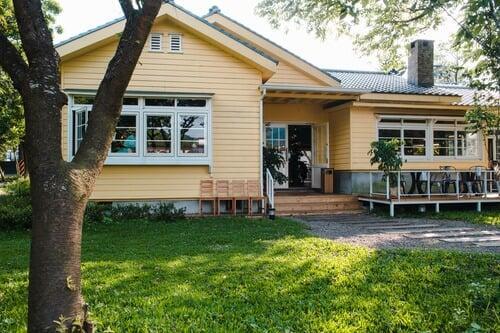Cost-Saving Tips for the ADU Permitting Process in California
| Table of Content |
| 1. What is an ADU? |
2. Benefits of Building a Permitted ADU |
| 3. Top Cost-Saving Tips for the ADU Permitting Process |
3.1 Know Your Local ADU Laws First |
3.2 Choose a Pre-Approved ADU Plan |
3.3 Build Under 750 Square Feet |
3.4 Opt for a Garage Conversion |
3.5 Bundle Permits & Inspections |
3.6 Use Design-Build Firms |
3.7 Apply for Local Grants or Fee Waivers |
| 4. FAQ |
Thinking about building an ADU in California? You’re not alone. With skyrocketing home prices and growing demand for flexible living space, Accessory Dwelling Units (ADUs) have become a go-to solution for homeowners looking to boost property value, earn rental income, or house family affordably.
But navigating the ADU permitting process can be time-consuming—and expensive—if you’re not prepared.
In this guide, you’ll discover smart, cost-saving strategies to make the permitting process smoother, faster, and more affordable.
What is ADU?

💡 Benefits of Building a Permitted ADU
Building a permitted ADU isn’t just legal—it’s smart. Here's why:
💵 Rental income potential
📈 Increased property value
🧑🧓 Housing for aging parents or adult children
🌎 More sustainable use of land
🏘️ Support for California’s affordable housing needs
And now, thanks to updated state laws, it’s easier and cheaper than ever to get started.
💸 Top Cost-Saving Tips for the ADU Permitting Process
1. Know Your Local ADU Laws First
Every city or county has slightly different rules. Visit your local planning department's website or use California’s ADU Calculator Tool to understand:
Size and height limits
Setback requirements
Parking regulations
Permit fees
👉 Pro Tip: Avoid costly redesigns by learning local codes before hiring an architect.
2. Choose a Pre-Approved ADU Plan
Many California cities now offer pre-approved ADU plans. These plans are:
Pre-reviewed for compliance
Faster to permit
Cheaper to submit
📉 This can cut thousands off architectural and engineering fees.
3. Build Under 750 Square Feet
Thanks to SB 13, ADUs under 750 sq. ft. are exempt from most impact fees—a major cost-saving advantage. If you’re tight on budget, downsizing slightly can mean big savings.
4. Opt for a Garage Conversion
Garage conversions are typically the most affordable type of ADU, as the structure already exists. This reduces:
Construction costs
Foundation work
Utility hookups
🛠️ Be sure the existing garage is structurally sound before committing.
5. Bundle Permits & Inspections
Some cities allow you to bundle:
Planning
Building
Electrical
Plumbing permits
📋 This saves time and money on administrative fees and multiple inspections.
6. Use Design-Build Firms
A design-build contractor handles both the design and construction. This streamlines the project and avoids markups between separate designers and builders.
🧑🔧 Look for firms with ADU experience and local permitting knowledge.
7. Apply for Local Grants or Fee Waivers
Some jurisdictions offer ADU incentive programs, including:
Permit fee waivers
Utility discounts
Construction subsidies (especially for affordable rentals)
💼 Check with your city or county housing department for current offers.

